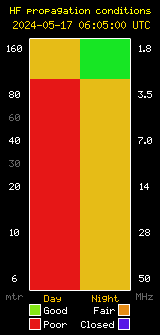March Club General Meeting
At tonight’s club meeting, ATV & Digital Modes Net controller Brian Milburn (K6BPM) provided SBARC members with a glimpse of the fun that can be had on HF with digital modes. By tunneling into his shack computer, Brian was able to project his own software defined radio (SDR) on the presentation screen at the meeting for a live demo of JT-65. JT-65, originally designed for Earth-Moon-Earth (EME) communication, has become tremendously popular on the HF bands for its ability to perform under extremely poor conditions. Those in attendance seemed intrigued by the prospect of being able to work stations around the world to fatten their logbooks even under the most dire band conditions. Although Brian’s SDR setup is quite impressive, one doesn’t need to spend a lot of money to get on many of the numerous HF digital modes, including JT-65. Even many older HF radios support computer interfaces such as SignaLink and RigBlaster, which are more than adequate for dabbling with free digital mode software like Fldigi and WSJTX. Listen to an audio recording of Brian’s presentation from our audio archive: Post expires at 7:39pm on Friday April 17th, 2015 but will still be available in the archives.









